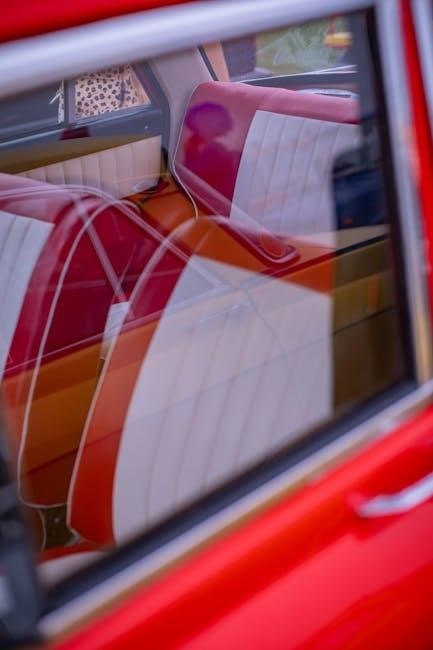nikon d60 manual
Category : Manuals
Nikon D60 Manual: A Comprehensive Guide

This guide offers a detailed exploration of the Nikon D60, covering its features, operation, and settings. Resources like Manualsdir.com and Manualza.com provide 204-page manuals and user guides in multiple languages, aiding photographers of all levels.
The Nikon D60, a popular DSLR, offers a fantastic entry point into the world of professional photography. User manuals, readily available online from sources like Manualsdir.com and Manualza.com, detail its 204 pages of features. This camera is known for its user-friendly interface and excellent image quality, making it ideal for both beginners and enthusiasts seeking a reliable and capable digital camera.
Camera Overview and Key Features
The Nikon D60 boasts a 10.2MP DX-format CCD sensor, delivering high-resolution images. Key features, detailed in comprehensive manuals found on sites like Manualsdir.com, include a 3.0-inch LCD screen and a responsive autofocus system. Its lightweight design and intuitive controls make it exceptionally accessible, while offering a robust set of capabilities for diverse photographic pursuits.
Understanding the Camera Body
The Nikon D60’s body, as illustrated in user manuals available on platforms like Manualza.com, features a durable build. Key areas include the front and rear panels, housing essential controls. The top panel provides direct access to shooting settings. Familiarizing yourself with this layout, detailed in the 204-page guide, is crucial for efficient operation.
Front and Rear Panel Layout
The Nikon D60’s front panel hosts the lens mount and essential buttons. Rear panel elements include the LCD screen, control dials, and menu navigation buttons. Manuals from Manualsdir.com visually detail each component’s location. Understanding this layout, as shown in the 204-page manual, streamlines camera operation and quick access to settings.
Top Panel Controls and Functions
The Nikon D60’s top panel features the mode dial, shutter button, and control dials for adjusting settings. Manuals from sources like Manualza.com illustrate the function of each control. Quick access to ISO, white balance, and exposure compensation is facilitated here. Mastering these controls, detailed in the 204-page guide, enhances shooting efficiency.
Menu System Navigation
The Nikon D60’s menu system, detailed in comprehensive manuals available on Manualsdir.com, is logically organized into Main and Custom Settings menus. Navigating with the directional pad allows access to shooting, display, and setup options. Understanding these menus, as outlined in the 204-page guide, unlocks full camera control and customization.
Main Menu Options Explained
The Main Menu, thoroughly documented in the Nikon D60 manual found on resources like Manualza.com, features key settings. Options include image quality, shooting, display, and setup. Users can adjust resolution, ISO, autofocus, and more. Referencing the 204-page guide ensures proper configuration for optimal image capture and camera functionality.
Custom Settings Menu Breakdown
The Custom Settings menu, detailed in the Nikon D60 manual available on Manualsdir.com, allows personalized control. Options include autofocus, exposure, and display settings. Users can tailor button functions and camera response. Consulting the 204-page guide unlocks advanced customization, optimizing the D60 for individual shooting styles and preferences.
Shooting Modes Explained
The Nikon D60 manual, found on resources like Manualsdir.com, details various shooting modes. Auto Mode simplifies operation, while Scene Modes optimize settings for specific scenarios. Aperture-Priority, Shutter-Priority, and Manual Modes offer full creative control. Understanding these modes, as outlined in the 204-page guide, is crucial for achieving desired photographic results.
Auto Mode and Scene Modes
The Nikon D60 manual, accessible via Manualsdir.com, explains Auto Mode’s simplicity for beginners. Scene Modes, like Portrait or Landscape, automatically adjust settings for optimal results. These pre-programmed settings, detailed in the 204-page guide, are ideal for quick, convenient shooting in various conditions, offering ease of use for all photographers.
Aperture-Priority, Shutter-Priority, and Manual Modes
The Nikon D60 manual, found on resources like Manualza.com, details advanced control options. Aperture-Priority lets you set the aperture, controlling depth of field. Shutter-Priority manages shutter speed, impacting motion blur. Manual Mode offers full control, as outlined in the 204-page guide, for experienced photographers seeking creative freedom.

Focusing System and Techniques
The Nikon D60 manual, available on sites like Manualsdir.com, explains its autofocus system. It covers various autofocus modes for different shooting scenarios. Manual focus is also detailed, offering precise control. Understanding these techniques, as described in the 204-page guide, is crucial for sharp, well-focused images.
Autofocus Modes and Settings
Nikon D60’s manual, found on resources like Manualza.com, details autofocus modes like Single-servo (AF-S), Continuous-servo (AF-C), and Auto-select (AF-A). It explains focus area modes – Single-point AF, Dynamic-area AF, and Auto-area AF. The 204-page guide clarifies settings for optimal performance in various shooting conditions.
Manual Focus Operation
The Nikon D60 manual, accessible via Manualsdir.com, explains manual focusing using the camera’s viewfinder and LCD screen. It details how to switch to MF mode on the focus switch. Guides illustrate precise adjustments of the focusing ring for sharp images, crucial when autofocus isn’t ideal, as detailed in the 204-page resource.
Exposure Control and Metering

Nikon D60 manuals, found on sites like Manualsdir.com, thoroughly explain exposure control. They detail using the camera’s metering system – matrix, center-weighted, and spot – for accurate light measurement. Guides demonstrate how to utilize exposure compensation to fine-tune brightness, ensuring properly exposed photos in various lighting conditions, as outlined in the 204-page documentation.
Understanding Exposure Compensation
Nikon D60 manuals, accessible via Manualsdir.com and Manualza.com, clarify exposure compensation’s role. This feature adjusts the camera’s meter, brightening or darkening images. Guides explain using the +/- button to override the meter’s suggestion, crucial for scenes with strong backlighting or unusual tones. Mastering this ensures properly exposed photos, as detailed in the 204-page user guide.
Metering Modes and Their Applications
Nikon D60 manuals, found on sites like Manualsdir.com and Manualza.com, detail three metering modes: Matrix, Center-weighted, and Spot. Guides explain Matrix metering’s all-area evaluation, ideal for general scenes. Center-weighted prioritizes the center, while Spot measures a tiny area. The 204-page manual clarifies when to use each for optimal exposure in varied conditions.
Image Quality Settings
Nikon D60 manuals, accessible via Manualsdir.com and Manualza.com, explain adjusting resolution, compression, and image size. Guides detail options like RAW for maximum editing flexibility or JPEG for convenience. White balance settings, covered in the 204-page manual, ensure accurate colors. Understanding these settings is crucial for achieving desired image quality.
Resolution, Compression, and Image Size
Nikon D60 manuals from resources like Manualsdir.com and Manualza.com detail how to select appropriate settings. Higher resolution captures more detail, while compression (JPEG Fine, Normal, Basic) affects file size. Image size options—Large, Medium, Small—impact printability. The 204-page guide explains balancing quality and storage.
White Balance Adjustment
Nikon D60 manuals, available on sites like Manualsdir.com and Manualza.com, explain white balance for accurate colors. Options include Auto, Incandescent, Fluorescent, Direct Sunlight, Cloudy, and Shade. Custom settings allow precise adjustments. The 204-page guide details correcting color casts, ensuring natural-looking photos under various lighting conditions.
Working with Flash
Nikon D60 manuals detail the built-in flash features, including modes like Auto, Red-Eye Reduction, and Fill Flash. Manuals from resources like Manualsdir.com and Manualza.com also cover external flash compatibility. Learn to control flash output and synchronize it with shutter speed for properly exposed and creatively lit photographs.
Built-in Flash Features
Nikon D60’s integrated flash offers several modes, as explained in available manuals. These include Auto Flash for automatic operation, Red-Eye Reduction to minimize red-eye effects, and Fill Flash to brighten shadows. Manuals from sites like Manualsdir.com detail how to adjust flash settings for optimal results in various shooting scenarios.
External Flash Compatibility

The Nikon D60 supports a range of Nikon Speedlights for enhanced flash photography, as detailed in the user manual. Compatibility allows for advanced features like TTL (Through-The-Lens) metering and remote flash control. Manuals available on sites like Manualza.com explain how to connect and configure external flashes for professional-quality lighting.
Video Recording Capabilities
The Nikon D60 captures video at various resolutions and frame rates, offering creative flexibility. User manuals detail settings for HD video recording. While not a primary video camera, it’s capable of producing quality footage. Manualsdir.com and similar resources provide guidance on audio recording options and video settings.

Video Resolution and Frame Rates
The Nikon D60 records video in HD, specifically 720p at 24, 25, or 30 frames per second. User manuals detail these options, allowing for smooth or cinematic footage. Manuals emphasize that the D60 isn’t designed for professional videography, but offers adequate quality for basic video needs.
Audio Recording Options
The Nikon D60 features a built-in microphone for recording audio during video capture. Manuals indicate it also supports an external microphone via the microphone jack, enhancing sound quality. Users can adjust audio levels, though advanced controls are limited. Guides suggest testing audio before crucial recordings.

Playback and Image Review

The Nikon D60 allows for easy image review on its LCD screen. Users can zoom in to check focus and detail. Manuals detail options for deleting unwanted images and protecting important ones from accidental erasure. Guides explain navigating through photos using the playback buttons, ensuring quick and efficient review.
Viewing Images on the LCD Screen
The Nikon D60’s LCD screen facilitates immediate image assessment. Users can cycle through photos using dedicated buttons, zooming in to verify sharpness and composition. Manuals illustrate how to adjust brightness and display settings for optimal viewing. Guides explain utilizing the histogram for accurate exposure evaluation directly on the screen.
Deleting and Protecting Images
The Nikon D60 allows selective image deletion, preventing accidental loss of cherished photos. Manuals detail the process for deleting single or multiple images. Protection features safeguard important files from accidental erasure. Users can lock images, ensuring they remain untouched during card formatting or deletion procedures, as outlined in available guides.
Connectivity and Data Transfer
The Nikon D60 facilitates seamless data transfer to computers via USB. Manuals explain connecting the camera and transferring images. Compatibility with various memory cards allows for flexible storage and transfer options. Users can easily download photos for editing or backup, ensuring precious memories are safely preserved and readily accessible.
Connecting to a Computer
Utilizing a USB cable, the Nikon D60 connects directly to your computer. Manuals detail the process, ensuring a stable connection for image transfer. Drivers may be automatically installed, or downloadable from Nikon’s support website. Proper connection enables easy photo management, editing, and archiving, streamlining your digital workflow.
Using Memory Cards
The Nikon D60 supports SD memory cards for storing photos and videos. Ensure compatibility with SDHC standards for larger capacities. Proper insertion is crucial; refer to the manual for correct orientation. Formatting cards within the camera optimizes performance and prevents errors. Regular backups are recommended to safeguard your valuable images.
Troubleshooting Common Issues

Common problems with the Nikon D60 include error messages and card-related issues. Consult the manual for specific error code solutions. Battery problems can often be resolved by ensuring a full charge or replacing the battery. Basic maintenance, like cleaning the sensor, prevents image quality issues. Restarting the camera often resolves minor glitches.
Error Messages and Solutions
Nikon D60 error messages indicate specific camera problems. Consult the comprehensive manual for detailed explanations and troubleshooting steps. “Card full” requires emptying or replacing the memory card. “Lens error” suggests a connection issue or incompatible lens. Restarting can clear temporary errors, while more complex issues may need professional repair.

Basic Camera Maintenance
Regular Nikon D60 maintenance ensures longevity. Clean the lens with a microfiber cloth and blower to remove dust. Inspect the sensor periodically for debris. Store the camera in a dry, safe place. Avoid extreme temperatures and humidity. Check battery contacts for corrosion and clean if necessary for optimal performance.
Customizing Your Nikon D60
Personalize your Nikon D60 through Custom Function settings, tailoring controls to your shooting style. Button and dial customization allows quick access to frequently used features; Adjust settings for autofocus, metering, and image quality. Explore the menu system to optimize the camera for your specific photographic needs and preferences.
Custom Function Settings
Custom Functions on the Nikon D60 offer extensive personalization. Modify camera behavior for autofocus, exposure, and metering. Assign functions to buttons for quicker access. Fine-tune settings to match your shooting style. These settings allow photographers to optimize the camera’s response and streamline their workflow for enhanced efficiency and control.
Button and Dial Customization
Nikon D60 allows reassignment of buttons and dials, tailoring the camera to your needs. Customize controls for frequently used functions like ISO, aperture, or autofocus. Streamline your workflow by placing essential settings at your fingertips. This personalization enhances shooting speed and comfort, improving overall photographic experience.
Advanced Photography Techniques
Explore creative control with Picture Control settings on your Nikon D60, adjusting tone and color for desired effects; Master depth of field to isolate subjects or capture expansive landscapes. Experiment with settings to achieve artistic blur or sharp focus, enhancing your photographic vision and storytelling.
Using Picture Control Settings
Nikon’s Picture Control allows customizing image tone directly in-camera. Standard is versatile, Neutral for post-processing, Vivid boosts colors, Monochrome creates black and white images, and Portrait optimizes skin tones. Fine-tune sharpness, contrast, brightness, and saturation for personalized results, enhancing your creative control.
Depth of Field Control
Depth of field, controlled by aperture, impacts image sharpness. Smaller apertures (higher f-numbers like f/16) yield greater depth, ideal for landscapes. Larger apertures (lower f-numbers like f/2.8) create shallow depth, blurring backgrounds for portraits. Focal length also influences depth; longer lenses produce shallower fields.
Accessories for the Nikon D60
Enhance your Nikon D60 with compatible accessories! Nikon lenses expand creative possibilities, while filters protect the lens and modify light. Consider a speedlight for improved flash control, and a remote trigger for convenient shooting. Extra batteries and memory cards are essential for extended use.
Lenses, Filters, and Other Add-ons
Nikon offers a wide range of lenses for the D60, from versatile zoom lenses to specialized primes. Filters, like UV and polarizing filters, protect your lens and enhance image quality. Add-ons include external flashes, remote controls, and comfortable camera straps for improved usability and creative control.
Resources and Further Learning
Nikon’s support website provides official documentation, FAQs, and software downloads for the D60. Online tutorials and photography forums, such as those linked through Manualsdir.com and Manualza.com, offer valuable learning resources. Explore user communities to share experiences and enhance your photographic skills with the Nikon D60.
Nikon Support Website
Nikon’s official website is the primary source for D60 support, offering downloadable manuals, firmware updates, and troubleshooting assistance. Access detailed documentation, FAQs, and contact information for direct support. Explore their resources to maximize your camera’s potential and resolve any operational issues efficiently.
Online Tutorials and Forums
Numerous online platforms host tutorials and forums dedicated to the Nikon D60. These communities provide valuable insights, user tips, and solutions to common problems. Explore resources like YouTube channels and photography forums to enhance your skills and connect with fellow D60 users for collaborative learning.











































































